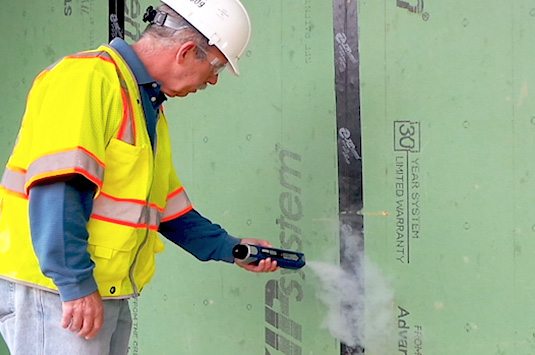When it comes down to it, constructing an energy-efficient home in compliance with 2020 Indiana Energy Code Chapter 11 is a daunting task. Chapter 11 sets requirements for air leakage, duct leakage, whole-home ventilation, and insulation R-values, along with requirements for how residential energy efficiency inspections should be conducted.
The process can get complex quickly, and TSI Energy Solutions has the experience to help. We specialize in residential inspections for new construction, and our step-by-step process is designed to make code compliance manageable and successful for you.
Here’s what you need to know about the residential energy efficiency inspection process and how TSI Energy Solutions can help you make sure your homes meet these rigorous standards.
What to expect with TSI’s residential energy efficiency inspections
Our inspectors have been conducting energy inspections for more than 40 years. We’ve refined our process to make it simple for builders, and we pride ourselves on staying abreast of the latest code changes to help you achieve compliance.
1. Form submittal
You initiate the inspection process by submitting your build plans and two required forms. Our builder spec submittal form and design submittal form, along with your plans, help set the groundwork for a well-informed and compliant construction process.
2. Initial analysis
Next, we evaluate your building specs to determine alignment with energy efficiency standards. We develop a Performance Path as-designed compliance packet for you, which serves as a crucial reference point throughout the construction process.
From filing for construction permits to final inspection, this packet helps ensure that your new construction home aligns with energy efficiency goals from the outset.
3. Two inspections
The code compliance process continues with two critical inspection milestones. Our team conducts the first inspection after wall insulation is in place and before drywall installation. This pivotal inspection phase ensures that the correct insulation is correctly installed, laying the foundation for energy efficiency.
We do the second inspection just before the home is ready for closing, which includes the required blower door and duct leakage testing. We cover every aspect of Chapter 11 to verify that all the energy-efficient features and systems have been properly implemented. This comprehensive inspection helps make sure the home is fully capable of delivering the promised energy efficiency benefits.
4. Final certification
After both inspections are done, our team compiles a final analysis of relevant data. We give you a final code compliance packet, which you will need to have before your Certificate of Occupancy (C of O) inspection. This final certification ensures the home meets or exceeds the energy efficiency standards set by the 2020 Indiana Energy Code Chapter 11.
The residential energy efficiency inspection process can be complex and confusing, but our structured approach makes it easier to ensure your new construction homes meet the stringent energy efficiency standards mandated by the 2020 Indiana Energy Code Chapter 11.
Partner with TSI Energy Solutions to confidently navigate the journey towards energy-efficient, comfortable, and environmentally friendly homes. Contact us to request a quote today.

